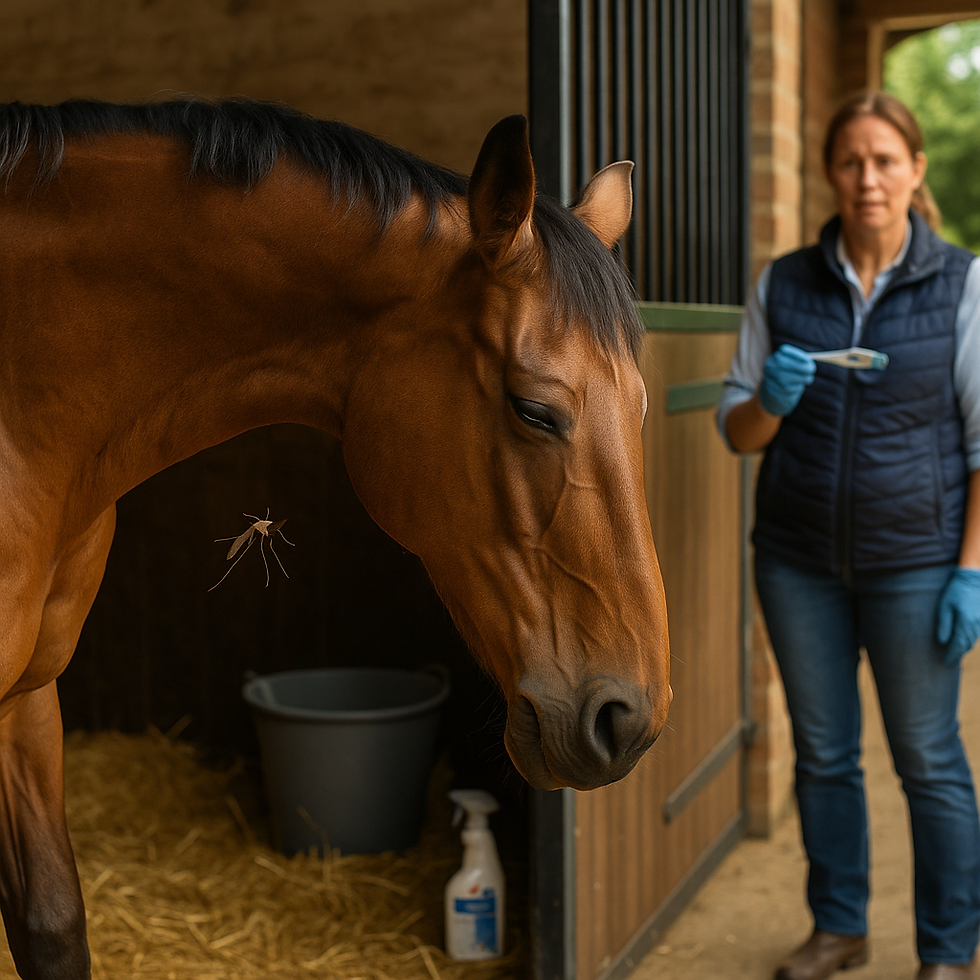Understanding Arthritis in Horses: Managing Joint Health for Longevity
- Midnight Blue Equestrian

- Jul 19
- 2 min read

Arthritis is one of the most common long-term conditions affecting horses—especially as they age or engage in demanding work. While it can’t be cured, arthritis can be managed with the right care, helping your horse stay comfortable, mobile, and active for as long as possible.
What Is Arthritis in Horses?
Arthritis, or osteoarthritis, is a degenerative joint disease that causes inflammation, pain, and stiffness in the joints. Over time, the cartilage that cushions the joint wears away, leading to friction between bones and reduced mobility.
This condition is particularly common in:
Older horses
Performance horses (eventers, show jumpers, dressage, etc.)
Horses with previous joint injuries or conformation issues
Signs and Symptoms
Spotting arthritis early can make a big difference. Keep an eye out for:
Stiffness when starting to move, especially after rest
Lameness or uneven gaits
Swollen joints or heat around the area
Reluctance to work or perform
Behavioural changes (irritability under saddle, resistance to bending, etc.)
Symptoms often worsen in colder weather or after intense work.
Diagnosing Arthritis
If you suspect arthritis, your vet may perform:
A physical examination
Flexion tests
Diagnostic imaging (X-rays, ultrasound, etc.)
Joint fluid analysis in some cases
Early diagnosis allows for proactive treatment and slower disease progression.
Treatment Options
While arthritis is not reversible, the goal of treatment is to reduce pain, control inflammation, and maintain mobility. Common approaches include:
1. Medical Management:
NSAIDs (non-steroidal anti-inflammatory drugs) like bute
Joint injections (corticosteroids or hyaluronic acid)
Supplements with glucosamine, MSM, chondroitin sulphate, and omega-3s
2. Lifestyle Adjustments:
Consistent, low-impact exercise to maintain movement
Avoiding deep, hard, or uneven ground
Warm-up and cool-down routines
Rugging in cold weather to prevent stiffness
3. Physical Therapy & Supportive Care:
Physiotherapy or equine massage
Hydrotherapy or swimming
Magnetic or infrared therapy boots
4. Farriery: Corrective shoeing or trimming to ease pressure on affected joints.
Prevention and Long-Term Management
While arthritis isn’t always avoidable, you can reduce the risk or slow its progress by:
Managing workload and avoiding overexertion
Using supportive surfaces in turnout and stabling
Maintaining a healthy weight
Regular check-ups and early intervention for joint injuries
Final Thoughts
Arthritis doesn’t have to mean the end of a horse’s working life. With attentive care, tailored exercise, and proper management, many horses continue to live happy, active lives well into their senior years.
At Midnight Blue Equestrian, we’re committed to the lifelong care of your horse—from peak performance to peaceful retirement. If you suspect joint issues or want advice on preventative care, we’re always happy to help.



Comments